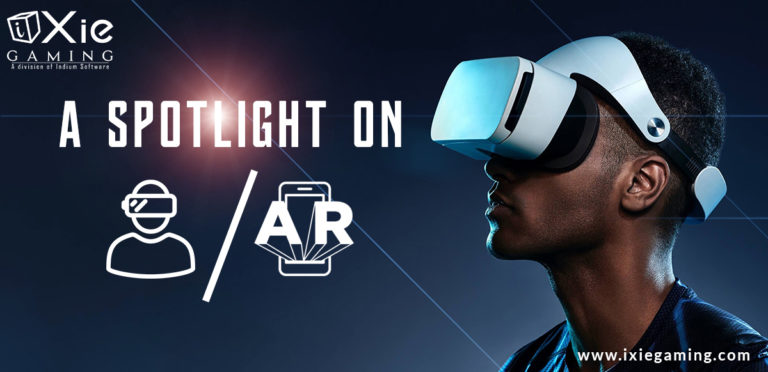Visual effects (VFX) are essential for making gaming experiences immersive and exciting. They include everything from 2D particle effects to realistic 3D simulations. Today’s VFX artists use advanced tools to create real-time particle systems, complex simulations, and stunning visuals that captivate players.
However, keeping up with the latest technology can be challenging. Whether you’re an indie developer making 2D effects or a big studio creating realistic 3D visuals, choosing the right VFX tools is vital. This guide will help you pick the best software to create amazing effects and take your games to the next level.
2D VFX Software
While 3D VFX often gets the most attention, 2D effects are still very important for many types of games, like side-scrolling platformers and top-down RPGs. With the right tools, you can turn simple sprites into stunning displays of art and movement.
Spine
Spine is the best tool for 2D skeletal animation. It has a flexible system that uses bones to create smooth and expressive animations, which can be easily reused and customized. Spine’s efficient workflow and high performance make it ideal for creating complex effects like character attacks, environmental hazards, and UI animations.
DragonBones
DragonBones is a strong tool for 2D skeletal animation, focusing on making the work process easy and quick. It’s simple interface and user-friendly tools are great for both experienced artists and beginners. DragonBones helps create smooth and natural animations with little effort, making it ideal for projects with tight deadlines or limited resources.

Particle Systems Within Game Engines
Unity’s Shuriken and Unreal Engine’s Cascade/Niagara particle systems are powerful tools for creating 2D effects in your games. They give you many options to control how particles behave, look, and last. You can make simple smoke or complex magical spells with them. These tools work smoothly with your game engine, making it easy to use and improve your effects.
Other Specialized 2D Tools
Pyxel Edit
For games that use retro pixel art, Pyxel Edit is a must-have tool. It offers a special environment for making detailed sprite sheets and animations, perfect for creating old-school, nostalgic effects.
TexturePacker
Optimizing sprite sheets is important for better performance, especially on mobile devices. TexturePacker helps by automatically packing many sprites into one texture atlas, which reduces the number of draw calls and improves overall rendering efficiency.
By using these 2D VFX tools, you can add stunning visual effects to your games that improve gameplay and make players feel more involved in your game world.
3D VFX Software
When it comes to making amazing visual effects like those in Hollywood movies, 3D software is the main tool. These powerful programs give artists great control over simulations, particle effects, and rendering, allowing them to create anything from realistic explosions to magical scenes.
Houdini
Houdini is the top choice for creating special effects. Its node-based system allows artists to design detailed and flexible effects easily. Whether it’s swirling smoke or flowing waterfalls, Houdini’s simulation features are unmatched. While it can be challenging to learn, mastering it gives artists incredible creative control and power.
Real-Time Engines (Unity & Unreal Engine)
These versatile engines are now used for more than just game logic and rendering; they are powerful tools for creating visual effects (VFX). They come with particle systems, shader editors, and visual scripting features that make it easy to create 2D and 3D effects. Unity has Shuriken and Visual Effect Graph, while Unreal Engine has Cascade and Niagara systems. These tools are user-friendly and provide real-time feedback, making it easy to test and refine your work.
Unreal Engine’s Visual Effect Graph
The Visual Effect Graph is a real game-changer for creating visual effects in real-time. It uses a node-based system, letting artists connect nodes to control how particles behave, look, and interact. This makes it easy to create complex effects. Because it’s in real-time, artists get instant feedback and can quickly make changes, speeding up the development process a lot.
FumeFX/Phoenix FD
When creating realistic effects is crucial, FumeFX and Phoenix FD are the top choices for fluid simulations. These tools are great at making stunning fire, smoke, and water effects that look and act like they do in real life. Their skill in simulating complex interactions between fluids and objects makes them essential for producing realistic explosions, environmental dangers, and weather effects.
EmberGen
In game development, time is very important. EmberGen provides real-time fluid simulations like fire, smoke, and mist without long waiting times. Its GPU technology makes these effects react quickly to the environment. EmberGen works smoothly with popular game engines, making it easier to use and perfect for projects with tight schedules.
Maya/3ds Max
Although these generalist 3D software packages are mainly known for modeling and animation, they also include tools for creating visual effects (VFX). They have particle systems, dynamic simulations, and rendering capabilities that can be used to make various effects. However, they often don’t have the specialized features and depth of dedicated VFX software like Houdini or FumeFX.
Choosing the right 3D VFX software depends on your project’s specific needs, budget, and team expertise. Whether you’re simulating a raging fire, creating magical spells, or making realistic explosions, the tools in this section will help you create visual effects that impress players.

Additional/Supportive Tools
While the main 3D and 2D VFX software gets most of the attention, many other important tools help bring visual effects to life. These lesser-known tools handle tasks like creating textures, editing images, and combining different elements, adding depth, detail, and finishing touches to the final creations.
Substance Designer/Painter
The powerful combination of Substance Designer and Painter helps artists create amazing textures using procedural methods. Designer’s node-based interface lets you make detailed, customizable materials easily. Painter then uses these materials on 3D models, adding realistic damage, weather effects, and fine details, making your visual effects look even better.
Photoshop
Photoshop is essential for digital art, especially for VFX artists. Its various tools help create and edit sprites, textures, concept art, and matte paintings. Whether you are painting an explosion or retouching a smoke effect, Photoshop offers the flexibility and precision you need to bring your artistic ideas to life.
After Effects
While mainly known for motion graphics and video editing, After Effects is also useful for VFX artists. Its strong compositing features let you blend different elements like particle effects, 3D models, and live-action footage smoothly. You can also use After Effects to create animated sprite sheets, adding extra excitement to your 2D effects.
These additional tools might not be the main focus, but they are very important. By learning how to use them well, you’ll gain more creative control and skill, allowing you to create visual effects that fit perfectly into your games and make a lasting impact on players.
Conclusion
The tools we’ve looked at in this guide are the latest and greatest, helping artists and developers create amazing visuals that players will remember.
What are your favorite VFX tools? Have you found any hidden gems or new ways of working? Share your experiences and thoughts in the comments below – let’s start a conversation about the changing world of game VFX!
Frequently Asked Questions:
Visual effects (VFX) in games are digital effects used to create realistic or fantastical visual elements that enhance the gaming experience. They include particle effects, animations, simulations, and other visual enhancements.
Visual effects are crucial in game development because they enhance the immersion and engagement of players by adding depth, realism, and excitement to the game world. They help convey the story, emotions, and actions more effectively.
Some popular tools for creating 2D visual effects include:
- Spine: Ideal for 2D skeletal animations.
- DragonBones: Known for its user-friendly interface and smooth animations.
- Pyxel Edit: Perfect for creating retro pixel art.
- TexturePacker: Helps optimize sprite sheets for better performance.
The best tools for creating 3D visual effects include:
- Houdini: Known for its powerful simulation capabilities.
- Real-Time Engines (Unity & Unreal Engine): Equipped with particle systems and shader editors.
- FumeFX/Phoenix FD: Excellent for realistic fluid simulations.
- EmberGen: Offers real-time fluid simulations with quick feedback.
Real-time engines like Unity and Unreal Engine provide built-in tools such as particle systems (Shuriken in Unity, Cascade/Niagara in Unreal) and visual scripting features that allow artists to create and tweak visual effects with immediate feedback, streamlining the development process.






